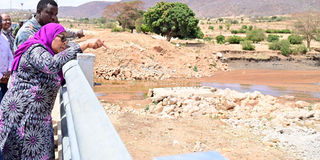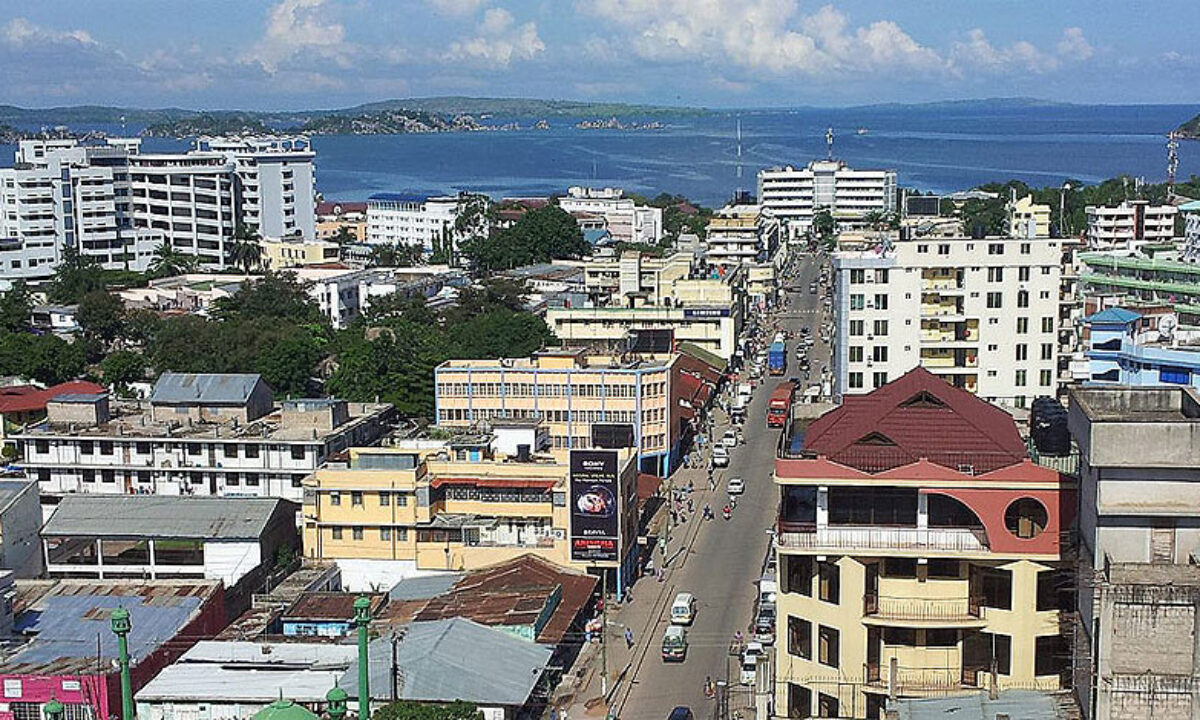Prime
Samia wants ‘sleeping giant’ Singida awakened as region clocks 60

President Samia Suluhu Hassan inspects the Mkalama Bridge shortly after she launched it. She was accompanied by the Minister for Works, Mr Innocent Bashungwa (second left), in Singida Region yesterday. PHOTO | STATE HOUSE
What you need to know:
- President Samia Suluhu Hassan has challenged leaders in Singida Region to effectively utilise available opportunities to bring quick and meaningful development to a region that has been endowed with abundant natural resources.
Dar es Salaam. President Samia Suluhu Hassan has directed leaders in Singida to come up with a plan to transform the region’s economy and move it from the list of one of the poorest administrative areas in Tanzania.
President Hassan, who is currently on a tour of duty, said the region is endowed with a wealth of natural resources, but its contribution to Tanzania’s Gross Domestic Product (GDP) was still below two percent.
“Let’s reflect on the speed of development during this time. My belief is that we could have gone far in the 60 years in terms of development,” she said during an event to mark the 60th anniversary of the formation of Singida Region.
Singida became an administrative region on October 16th, 1963, just two years after Tanganyika attained its independence from British colonial rule.
President Hassan also challenged leaders in Singida to analyse whether or not they have effectively utilised the available opportunities within the region.
“I instruct you to reflect and analyse what you need to adjust so that we can transform and drive development in this region,” she said.
By the time of its establishment, the region had 392,506 people, but data from the Tanzania Population and Housing Census 2022 put the number of people in the region at just over 2 million.
The region is also endowed with 26,893 hectares of land that is viable for irrigation and arable land for farming.
But according to President Hassan, despite being held back by natural challenges such as its semi-arid nature, there were also a number of behavioural issues that needed to be worked on for Singida to prosper.
“However, I have noticed that regardless of the existing climate change challenges, there are also behavioural issues in the leadership. That must end,” the President insisted.
She said the leadership in the region should also stay ahead of time and consult the citizens on the proper use of the resources, such as advising on the appropriate crop production that complements the weather conditions of the region.
Singida has a semi-arid climate. It is warm to hot all year round, and it consists mainly of sand with grasses and some-times shrubs.
Singida Regional Commissioner, Mr Peter Serukamba, said the region received Sh44.3 billion to support sectors of production, specifically agriculture, during the two and a half years of President Hassan’s administration.
He said there were also other supports, such as the distribution of 2977 tonnes of subsidised fertilisers, from which 8342 farmers benefited.
“There was also the distribution of 864 tonnes of subsided sunflower seeds in the rural areas, which overall boosted the production by 74.3 percent,” he said. According to Mr Serukamba, sunflower production is now near 441, 000 tonnes.
He later revealed that there were Sh51.5 billion in funds in the health sector where they were able to build four new hospitals, handle the maintenance of one, and develop 22 new health centres, just to mention a few.
“We were also able to procure medical equipment and develop infrastructure in the health care delivery system in the region,” he said.





